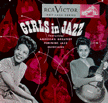
The University of Chicago Magazine
October-December 1996

Research bucks funding trend

Research head David Schramm. )
Research funding at the University has exceeded $200 million for the first time, despite a national trend toward reduced support for university-based research projects.
Chicago researchers received a record $207.1 million in funding for projects during the fiscal year ending June 30--an 11.5 percent increase over last year. Federal agencies funded more than 75 percent of the University's projects, with grants from the Department of Health and Human Services accounting for 48 percent of the funding. The National Science Foundation was the second largest source of federal research funds, contributing 12.4 percent of the total.
"This is very encouraging given the current funding climate," says David Schramm, vice president for research and Louis Block distinguished service professor in astronomy & astrophysics. "Chicago continues to be a leading center of research in many fields, and those strengths are recognized by the funds that are provided for projects here."
The increase was propelled by a 19.1 percent boost in funding for research in the Biological Sciences Division. The division, says Schramm, has "been aggressive in seeking projects, and that approach has paid off handsomely." He also credited the construction of the Biological Sciences Learning Center/Jules F. Knapp Medical Research Building for providing facilities that encourage funding agencies to be generous with University projects.
A four-year comparison shows the BSD has increased its funding from $93.3 million in 1992 to 129.9 million in 1996. Though reporting more modest growth, the Physical Sciences Division has maintained steady funding: in the $40-44 million range over the past five years.
Federal agencies funded more than 75 percent of the University's projects.
Other success stories include the School of Social Service Administration, which received $4,594,000--a 75 percent increase compared with the previous fiscal year--and the U of C Law School, with $3,111,000 in funding: a 411.7 percent jump.
Schramm noted that the record-breaking total is particularly noteworthy considering it does not include the unusually large grant of $6.27 million recently awarded to the University for its Consortium for Advanced Radiation Sources (CARS), received after the June 30 fiscal-year end.
CARS, which is managed by the University, received the grant from the National Science Foundation and the Department of Energy to construct a facility for ChemMatCARS, the third of three CARS sectors at Argonne National Laboratory's Advanced Proton Source. ChemMatCARS will be used to study condensed-matter chemistry and materials science at APS, the world's most brilliant source of X-rays.
In this department:
Also in the Journal:
Plus items For the Record.
Go to:
- INVESTIGATIONS
- CHICAGO JOURNAL
- EVENTS
- LETTERS
- CHICAGOPHILE
- Feature story, "The Strange Laboratory of Dr. LaBarbera"
- Feature story, "Strength in Numbers"
- Special Report, "Building a Strong Cornerstone"
- Feature story, "The Wirszup Factor"
- CLASS NEWS
- DEATHS
- BOOKS BY ALUMNI
- IN THE CLUBS
Return to October-December 1996 Table of Contents
